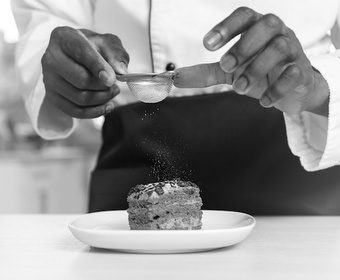
Dessert – the grand finale
The end of the meal, dessert, isn’t like all the other courses where what you have on the plate fits fairly easily under the headings “vegetables”, “meat” or “fish”. In this last course, sugar is often (but not always) the only predictable ingredient and common denominator. This is why this part of the PS Food Academy doesn’t look quite like the others.
The most common desserts
To tackle this course properly, we chose to identify the most common desserts on a (western world) restaurant menu. If restaurateurs and restaurant diners love them, then so do we.
Cheese is cheese. Not pudding.
– Christophe Buchet, Bleck, is happy to challenge the assumption that desserts have to be sweet. But cheese is still cheese.
Ingredients, techniques, equipment, etc.
Desserts are an exact science that has a lot to do with techniques of varying difficulty, practiced on ingredients in a wide range of food categories. How do you choose chocolate? Do you need to weigh egg yolks? What exactly is mousse? We’ve asked the professionals in our network of chefs this and many more fascinating questions.
Shortcuts to the expertise:
Chocolate mousse
Chocolate fondant
Crème brûlée
Ice cream
Pie
Pavlova
Crêpes Suzette
Panna cotta
Happy reading!


